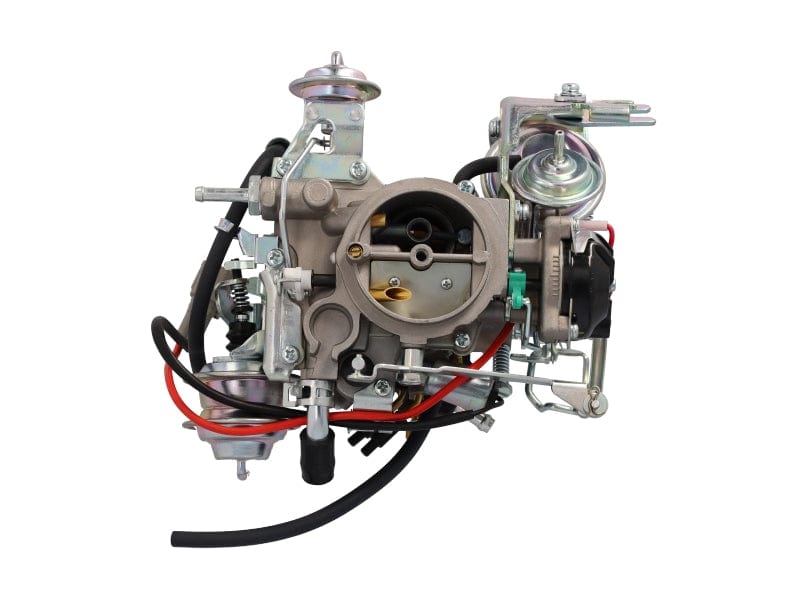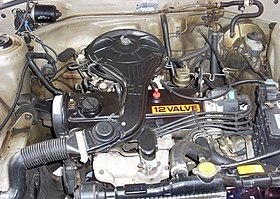Toyota Tazz: A Review of Its Handling, Fuel Economy, and Overall Performance
Toyota Tazz: A Review of Its Handling, Fuel Economy, and Overall Performance
Blog Article
Check Out the Most Recent Fads in Engine Technology With Tazz
In the swiftly progressing landscape of vehicle innovation, Tazz stands at the forefront, highlighting substantial innovations in engine systems that focus on both development and sustainability. From hybrid engines that maximize fuel efficiency to the emergence of hydrogen fuel cells, the trends forming contemporary powertrains are not only boosting performance yet additionally dealing with crucial ecological difficulties.
Hybrid Engine Innovations
Crossbreed engine developments represent an essential shift in auto innovation, combining the advantages of internal burning engines with electric propulsion systems. This assimilation not only boosts fuel performance however additionally decreases exhausts, meeting significantly strict ecological policies. By making use of both energy resources, hybrid engines can optimize efficiency, supplying power when needed while preserving fuel throughout less demanding motoring conditions.
Recent innovations in hybrid modern technology include enhancements in battery performance and regenerative braking systems. These advancements permit for higher energy healing throughout deceleration, which can be redirected to aid in acceleration or power auxiliary systems. Suppliers are concentrating on small layouts and light-weight materials to take full advantage of the effectiveness of crossbreed powertrains.
The growth of plug-in crossbreeds has actually also expanded the market, allowing motorists to bill their automobiles making use of standard electrical outlets. This feature frequently enables for considerable all-electric variety, additional reducing reliance on conventional fuels. tazz. As the automobile industry remains to develop, hybrid engine technologies are expected to play an important function in bridging the gap between standard lorries and totally electrical designs, offering a transitional service that caters to varied customer requirements and preferences
Advancements in Electric Powertrains
The automotive landscape is swiftly advancing, with electrical powertrains emerging as a leading force in lasting transport. Developments in electric vehicle (EV) modern technology are substantially improving performance, performance, and customer experience. Secret innovations consist of enhancements in battery chemistry, which have raised energy thickness, decreased billing times, and prolonged overall battery life.
Solid-state batteries, as an example, promise to change the market by giving higher safety and security and effectiveness contrasted to conventional lithium-ion cells. Furthermore, improvements in regenerative braking systems are allowing vehicles to recuperate power during deceleration, adding to overall performance.
Along with battery innovation, electrical motor layouts are becoming a lot more innovative. Innovations such as integrated electric motors and progressed thermal management systems are helping to enhance power distribution and lower weight, ultimately improving automobile characteristics.

Jointly, these developments emphasize the dedication to shift towards cleaner, much more efficient transport remedies, placing electric powertrains at the leading edge of automotive innovation.
The Rise of Hydrogen Gas Cells
Significantly, hydrogen fuel cells are acquiring traction as a sensible option to standard internal burning engines and battery electrical cars. This technology harnesses the chemical power kept in hydrogen, converting it right into electrical energy with an electrochemical reaction with oxygen. The key by-product of this process is water, making hydrogen gas cells an ecologically friendly choice with zero exhausts at the tailpipe.

Automakers are progressively buying hydrogen gas cell modern technology, recognizing its capacity for long-range applications and fast refueling capacities that measure up to conventional fuels. Additionally, industries such as durable transportation and public transportation are specifically fit for hydrogen gas cells, where battery electrical remedies might fall short due to weight and range limitations.
As research study and investment continue to expand, hydrogen fuel cells are poised to play a significant role in the future landscape of clean transportation and energy solutions.
Enhancements in Internal Burning Engines
Innovations in internal burning engine (ICE) modern technology are changing typical lorries to fulfill contemporary environmental requirements and performance expectations. Among one of the most considerable enhancements entails the assimilation of innovative gas shot systems. These systems enhance the air-fuel mix, improving combustion efficiency and resulting in minimized emissions. Straight gas injection, for instance, enables for much better atomization of gas, causing more total combustion and enhanced power outcome.
Furthermore, turbocharging has actually acquired prestige, permitting smaller sized engines to deliver higher performance without the weight of bigger engines - tazz. This innovation not just improves efficiency but also adds to reduce gas consumption. Variable shutoff timing systems are likewise being fine-tuned, making it possible for engines to adapt to different driving conditions for boosted torque and responsiveness
In addition, making use of light-weight materials in engine construction is becoming standard, additional boosting gas performance by lowering general vehicle weight. Engine control units (ECUs) are increasingly sophisticated, allowing real-time changes that maximize performance and exhausts.
These improvements jointly signify a pivotal shift in ICE innovation, lining up with international sustainability objectives while still supplying the performance drivers anticipate from their automobiles. As the industry evolves, these enhancements proceed to shape the future of typical automobile engineering.
Future Fads in Engine Effectiveness
Substantial improvements in engine performance are expected as manufacturers concentrate on integrating advanced technologies to meet rigid environmental guidelines and consumer needs. The change in the direction of electrification, crossbreed systems, and different fuels is reshaping the automobile landscape, driving developments that boost fuel economic situation and decrease exhausts.
Among the key fads is the application of advanced products and producing strategies. High-strength alloys and lightweight compounds add to lowered car weight, thus additional resources enhancing general effectiveness. In addition, the fostering of turbocharging and variable valve timing modern technologies permits enhanced power result from smaller engines, additionally improving fuel economic situation.

Final Thought
Developments in hybrid engine systems, electrical powertrains, and hydrogen gas cells show a commitment to lowering emissions while improving performance. Improvements in internal combustion engines and a focus on light-weight products add to overall engine effectiveness.
From hybrid engines that enhance fuel performance to the emergence of hydrogen gas cells, the trends shaping contemporary powertrains are not just improving efficiency yet likewise addressing crucial ecological challenges.Crossbreed engine technologies represent a crucial shift in automobile innovation, integrating the benefits of internal burning engines with electric propulsion systems.Furthermore, turbocharging has actually acquired importance, permitting smaller sized engines to supply higher performance without the weight of larger engines. Additionally, the fostering of turbocharging and variable valve timing innovations permits for boosted power output from smaller engines, additionally boosting fuel economy.
Improvements in internal combustion engines and a focus on light-weight materials add to general engine effectiveness.
Report this page